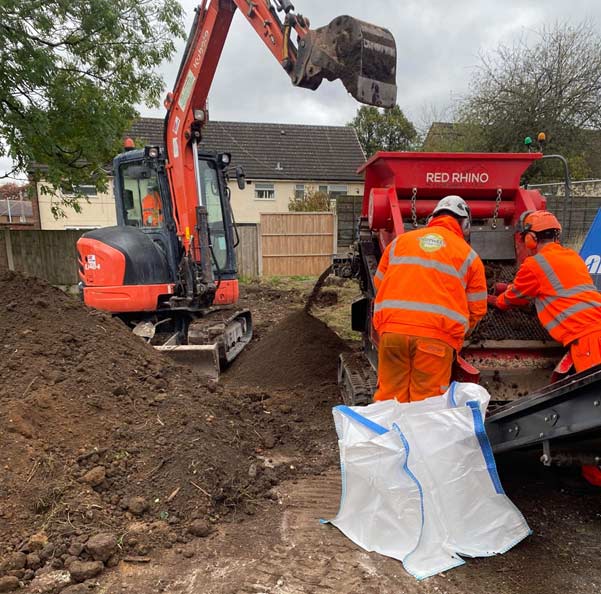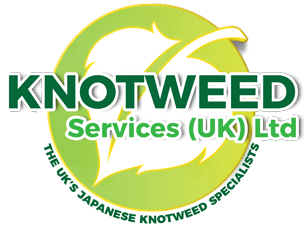JAPANESE KNOTWEED REMOVAL Waterlooville
4
LIVE KNOTWEED JOBS IN Waterlooville
17
SUCCESSFUL KNOTWEED REMOVAL PROJECTS IN Waterlooville
100%
SUCCESSFUL PROPERTY SALES AFTER TREATMENT
1
Waterlooville BASED KNOTWEED STAFF
NO OTHER JAPANESE KNOTWEED COMPANIES IN Waterlooville HAVE OUR TRACK RECORD
Knotweed services is a highly professional company with years of experience which specialise in Japanese knotweed removal, control, and treatment for properties located in or around Waterlooville.
Knotweed Services is a PCA member, a government-approved trade body for “the damp, waterproofing, wood preservation and invasive weeds industries.” If you have a knotweed problem, we’ll take care of it for you.
Our company has successfully completed large-scale knotweed eradications in and around Waterlooville and England. To succeed, identification of the species, survey, treatment , and control must all take place. We can help you with your knotweed.
Are You Aware of The Reality About Japanese Knotweed In Waterlooville?
Japanese Knotweed creates many problems for house owners and commercial properties. The plant makes it difficult to get a loan on or sell a property, which impacts both buyers and sellers.
If Japanese Knotweed is on your commercial land or property, projects on that land may be delayed until you deal with the infestation correctly and legally.
Protect Your Property from Japanese Knotweed
- The roots of Japanese knotweed can emerge through cracks in tarmac and concrete, which can contribute to structural problems.
- Mortgage lenders are concerned about the presence of Japanese Knotweed in buildings they are considering investing in.
- Knotweed obstructs both visibility and access to paths, highways and other infrastructure. The plant produces a massive annoyance for commercial properties in particular.
Knotweed Services offers a guarantee against re-infection for customers in Waterlooville who have Japanese Knotweed. We will remove the plant in its entirety and transfer it to a disposal site.



FREE IDENTIFICATION
Fill in the form below, attach your pictures and we’ll let you know if the plant in your picture is Japanese Knotweed.
Call Knotweed Services now to begin the treatment and management of your infestation in Waterlooville
Call us on: 0121 725 6348 or 0800 689 4146 for an on the spot estimate
The Knotweed Services team will support you through the process from initial contact to project completion.
RESIDENTIAL JAPANESE KNOTWEED REMOVAL Waterlooville.
WHAT YOU NEED TO KNOW ABOUT JAPANESE KNOTWEED REMOVAL Waterlooville
As Japanese knotweed infestations vary considerably, so do treatments for Japanese knotweed removal. One method of Japanese knotweed removal may not be enough to eliminate the plant.
As we work with nature, our Japanese Knotweed specialists consider all factors and choose the best way to deal with Japanese Knotweed. We offer a guarantee covering Japanese Knotweed treatment.
— JAPANESE KNOTWEED REMOVAL OPTIONS AVAILABLE IN Waterlooville

FOLIAR SPRAYING *
Most common treatment. The spraying of powerful chemicals with a knapsack. We ensure that other plants aren’t damaged. The most effective time for foliar spraying to Japanese Knotweed is in Spring.

FOLIAR LEAF WIPING *
With this Japanese knotweed treatment, we use a device to ‘physically wipe’ our chemicals onto the Japanese knotweed leaves. Because this use is so exact, we can often utilise a larger concentration of chemical.

STEM INJECTION
We inject the invasive weed with a small dose of herbicide. This is the most cunning elimination technique since it involves injecting chemicals right into the Japanese knotweed. It is not affected by the weather.

BIOMASS REDUCTION
Biomass is a sort of excavation and removal, but instead of excavating all of the soil affected by Japanese Knotweed, we simply remove the afflicted portions. It is an effective method of Japanese Knotweed control that allows for the reuse of the soil. minimising landfill usage.

CROWN REMOVAL
Crown and stems are capable of renewing, and even small fragments of clipped crown or stem are capable of regenerating and producing a new invasive weed – eliminating them is a wonderful method.
— COMMERCIAL TREATMENT OPTIONS AVAILABLE IN Waterlooville

SOIL SCREENING
A tried-and-true methodology utilised on hundreds of sites across the UK.
The rhizome material of Japanese knotweed is removed from the soil material using the screening procedure. The Japanese knotweed debris is then either transferred to a licenced landfill at a significantly reduced disposal rate or burnt on site using a D6 exemption from the Environment Agency or Natural Resources Wales.
The cleaned soils can subsequently be used elsewhere, typically in soft landscaping areas where they will not interfere with construction.
This can greatly cut landfill and backfill expenses while also helping to minimise the carbon impact on site due to fewer truck travels to the dump.

BIOSECURITY SUPERVISION
We could send a biosecurity specialist to your site to keep an eye on any soil movements or excavations that can disturb Japanese knotweed.
We can set up a location at the site entry where individuals can wash their boots and equipment as part of these precautions. All toolbox discussions, which will be signed by all on-site contractors involved in the operation, will be provided to the principal contractor by us.
Where biosecurity is required, we may offer ad hoc geotextile barriers.
We will deliver a thorough biosecurity report to the client after the task is finished.
This approach can be utilised in conjunction with several on-site therapy approaches.

EXCAVATION AND DISPOSAL
This treatment method is ideal where time constraints are present and there’s no other option other than to remove both the Japanese Knotweed and contaminated soil to a registered landfill.
By removing all traces of the infestation quickly, this offers a rapid solution to your problem and allows your commercial project to begin groundwork’s almost straight away. When time is of the essence, there is no quicker Japanese Knotweed removal/treatment method.
Any waste taken off-site will be done so with a licensed waste carrier to a suitably authorised landfill site.

CELL BURIAL
Cell burial comprises of moving Knotweed contaminated soil from one location on site, burying it in an excavated pit which is lined with a root barrier membrane, in a different position on the site.
The burial requirements for Japanese Knotweed are as follows:
- The Environment Agency recommends that the top of the burial cell should be a minimum of 2 metres below ground level.
- The overall depth of the burial pit should be in excess of 5 metres deep. All root barrier seams are welded together forming an encapsulated cell from which the Japanese Knotweed cannot escape. Clean soil is then used to backfill on top of the cell.
- To prevent accidental disturbance of the burial site, it is recorded on all site plans and future land owners should be made aware of the location.

STOCKPILE & TREAT
Bundling is a technique used to move contaminated Japanese Knotweed soil to another portion of the site that is being treated. A bund is a small, often 0.5m-deep region of contaminated soil.
For the surface of the bund to be flush with the surroundings, it can be raised, placed on top of the ground, or positioned inside an excavation.
The Japanese Knotweed will be relocated to a less-used region of the site thanks to the bund. When compared to where the Japanese knotweed was first found, this “buys time” for treatment.

HERBICIDE APPLICATION
At Knotweed Services we can provide the client with bespoke treatment plans depending on the locations of the Japanese knotweed.
These plans can work in conjunction with other methods of treatment where access is limited to pedestrian movements i.e., embankments or existing pathways within a site.
This will normally consist of up to 3 visits per annum to apply herbicide by either foliar spray technique or stem injection during the growing season over a period of 3 years, with a monitoring period of 2 years thereafter.
We would select the appropriate herbicides depending on the surrounding foliage or environmental constraints.
After each visit a full treatment record would be provided with photos showing the progress of the works and then an annual report.
